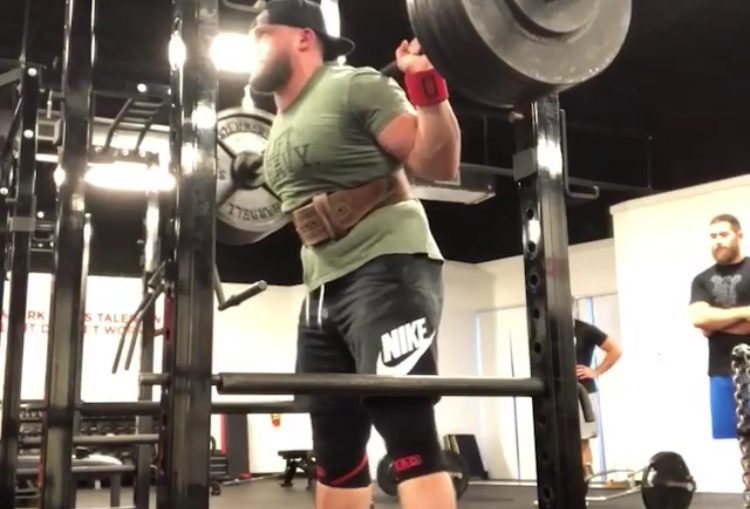Written by: Kevin Cann
This is going to be more of a rant than anything. It is not a bad rant, but something that frustrates me at this point in my career. And before I get started, let me just tell you, I was this person before. I think it is part of the process of maturing as a coach.
I have performed the FMS and swore by it, I have done the “single leg is better than bilateral exercise”, I have sworn by neutral spine and poor mechanics will make you spontaneously combust.
Then I got under the bar with the tutelage of one of, if not the greatest powerlifting coach of all time. I decided to challenge all of my beliefs and truly learn for myself. Graduate school led me to think like that. Grad school forced me to challenge many of my beliefs in the field and to support it with solid research. I soon found out that I couldn’t back my answers up and what I thought was true was most likely not.
I am writing this article because my lifters are constantly criticized by personal trainers in this field for the way they lift. On more than one occasion my lifters have been told to not lift with their head up.
Why should we look down? To “pack the neck?” Why? Because if we look up somehow we are going to herniate a disc? Are you fucking kidding me? When you ask these questions, you get some regurgitation about how the spine not being in neutral can lead to injury.
However, neutral spine is not any more protective against injury than being in a flexed position (https://www.ncbi.nlm.nih.gov/pubmed/20838275). Flexion is unavoidable in a squat and deadlift. At the bottom of a squat there is at least 40 degrees of lumbar flexion and a deadlift has 80 degrees. Your argument for neutral spine does not hold weight when flexion is unavoidable.
Having the head up actually gives our traps and our erectors greater leverage. This is why the deadlift is easier when we look up. It also pulls the hips closer to the bar which helps improve leverages.
On top of that, look at the elite lifters across the globe. The majority of them lift with a head up position. I watch 800 squats and 800 deadlifts a week with lifters in these positions, and luckily we have had no back issues, knock on wood.
This is why we use the Acute Chronic Work Ratio (ACWR) with my lifters. Injuries occur when the athlete’s fatigue (acute 7-day workload) exceeds what they are prepared for (chronic 28-day average workload).
I know my whys with why I do things. In the cases above they can site studies performed by McGill that show issues with flexion. Again, flexion is unavoidable in these situations. Give your athletes weights that are appropriate for appropriate volumes.
I will say that heavy loaded end range flexion is probably more dangerous. This is another argument to keep your head up. Keeping your head up allows you to fight flexion throughout the whole lift. Maintaining as much extension as possible to give the strong spinal extensors of your back leverage to keep you upright, and spinal extension is a joint action of those lifts, so greater leverage to assist in lifting the weight. This is why most elite lifters lift this way.
When we jump we tend to look up. If you look down you aren’t getting very far. Yes, the loading strategies are different, but when we jump we are attempting to apply maximal force very quickly. I would argue that we would see more neck and back injuries from jumping if this was the case. I would even argue that most jumping injuries most likely occur upon landing, or sport schedules that are too congested.
Controlling volume and building the important muscles of the back is injury prevention. Lifting heavy, as long as the ACWR is followed, is also protective against injury. I would argue that lifting heavy is more protective against injury than 15lb single leg deadlifts. Take a 600lb squatter and someone that squats 200lbs and who do you think wins the collision? Which athletes’ tendons and ligaments are stronger?
The law of specificity applies here as well. In my opinion those single leg deadlifts are not decreasing injury risk anywhere as the forces, speeds, and angles are very different than what they encounter on the field. Not that lifting heavy will mimic those speeds and angles, but the tendons, muscles, and ligaments will grow much stronger with heavy squats when compared to some lightly loaded single leg exercise. Power skips and building acceleration volumes would be more appropriate in my opinion, but I coach powerlifters so I don’t really care.
All I want to say is to think for yourself and keep an open mind. If someone is squatting 635lbs with their head up, maybe ask them why they look up. You can even explain your concerns. The Russians and every weightlifter lift with their heads up and injuries in the sport are far lower than those in field sports.
Insert cool sign off here

